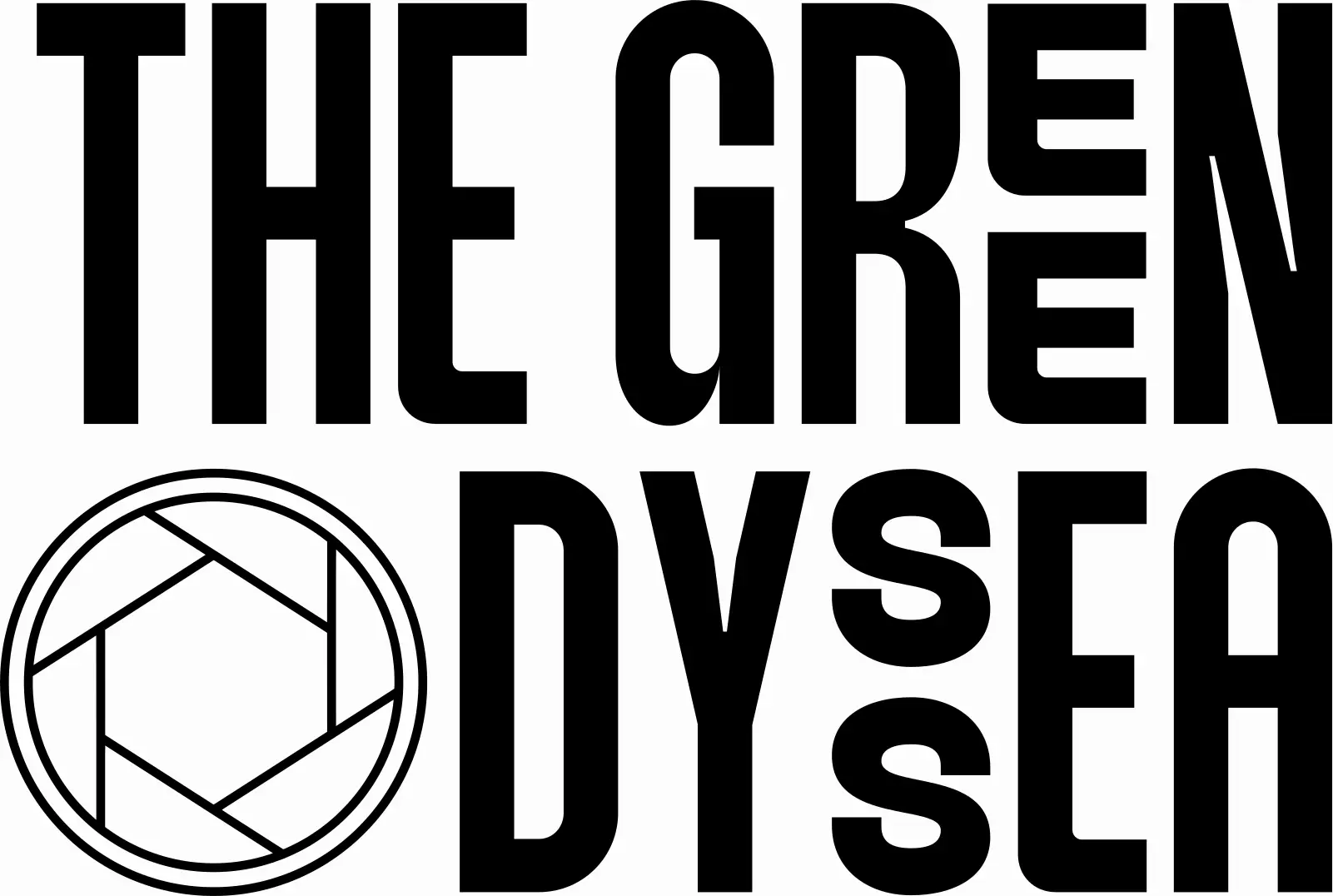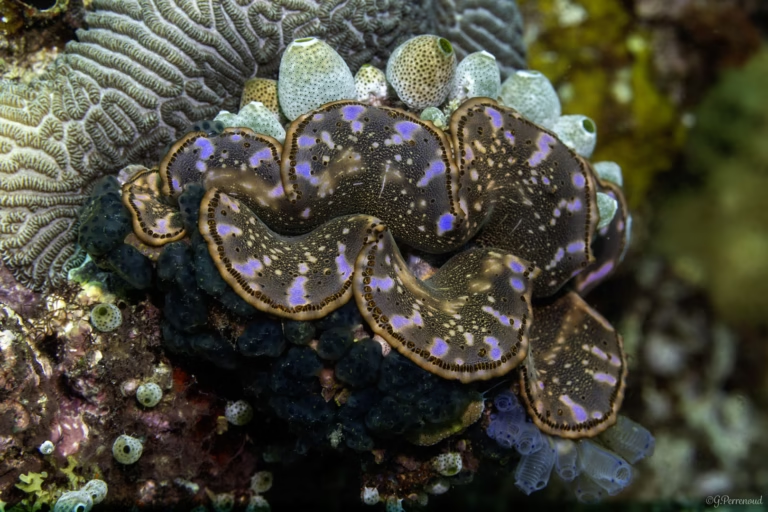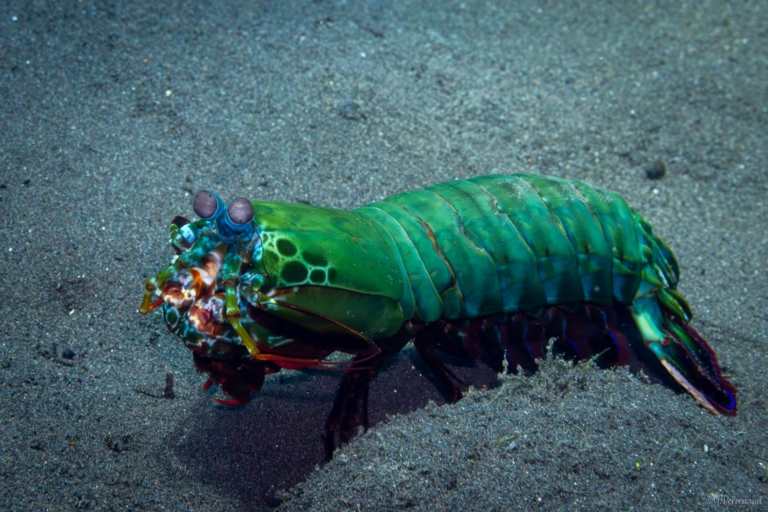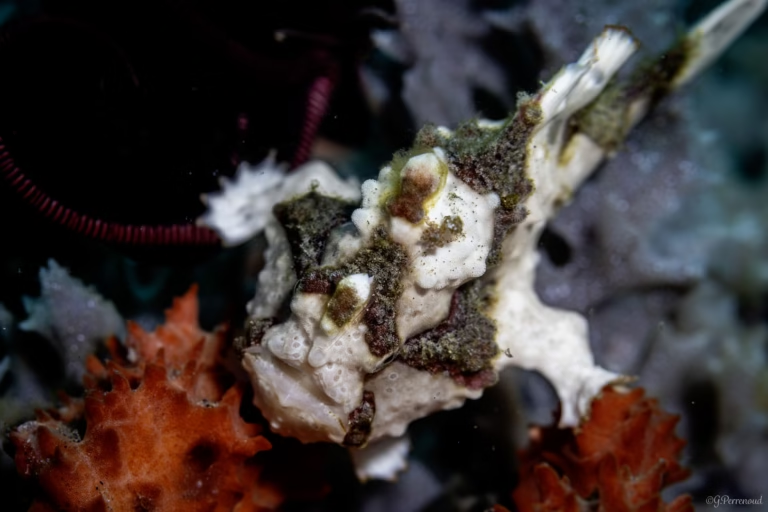
TABLE OF CONTENTS
Introduction
In this article, we’ll learn a few terms to designate the different parts of coral, understand what they’re used for and where they are distributed around the globe.
In the coming weeks/months, we’ll be publishing other articles more specific to each species.
Corals are marine animals belonging to the phylum Cnidaria. Their structure is fascinating: they are made up of tiny creatures called polyps. Imagine body tubes with a flower-shaped mouth, attached to their base by a foot. When they live in large colonies, these polyps form what we know as coral.
But how do these polyps build their homes? The builder polyps create a hard skeleton at the base of the coral reef. This skeleton is made up of calcium carbonate, a solid substance. Together, they create a rigid collective structure, rather like stacked bricks. It is this hard coral that makes up the magnificent underwater reefs.
Corals can be solitary or colonial.
1. Solitary corals :
- Solitary life: Solitary corals live independently of each other. Each individual is a distinct entity.
- Individual form: Each solitary coral polyp has its own calcareous skeleton and its own mouth for feeding.
2. Colonial corals :
- Group life: Colonial corals form groups of interconnected polyps. They share the same calcareous skeleton.
- Resource sharing: The polyps in a colony feed together and benefit from photosynthesis by zooxanthellae (symbiotic algae).
- Diversity of forms: Colonies can take different forms.
Corals form coral reefs. This complex marine ecosystem, which is home to around 25% of marine diversity, forms in the shallow seabed of the inter-tropical zone, from around 33° North to 30° South, or to put it more simply, close to the equator.
Coral reefs result from the construction of a durable mineral substrate (composed of calcium carbonate) secreted by living creatures, the corals.
As long as the corals are alive, the reef continues to grow, offsetting the effects of erosion.

Physical characteristics
Coral reefs can take different forms:
- The fringing reef is a reef with a lagoon that borders a landmass, along the coast of the mainland or an island. Fairly narrow and recent, it is clearly distinguished from the barrier reef by its more modest size.
- The barrier reef is much further from the coast, separated from the coastal zone by a lagoon that can be several kilometres wide and several dozen metres deep.
- The cay reef is an isolated reef often located between fringing reefs and barrier reefs. It varies in size and shape.
- Atoll is a group of roughly circular coral reefs surrounding a shallow area, the lagoon. The coral making up the atoll is found on the edge of a seamount or a source of lava that has disintegrated or died out incompletely underwater.
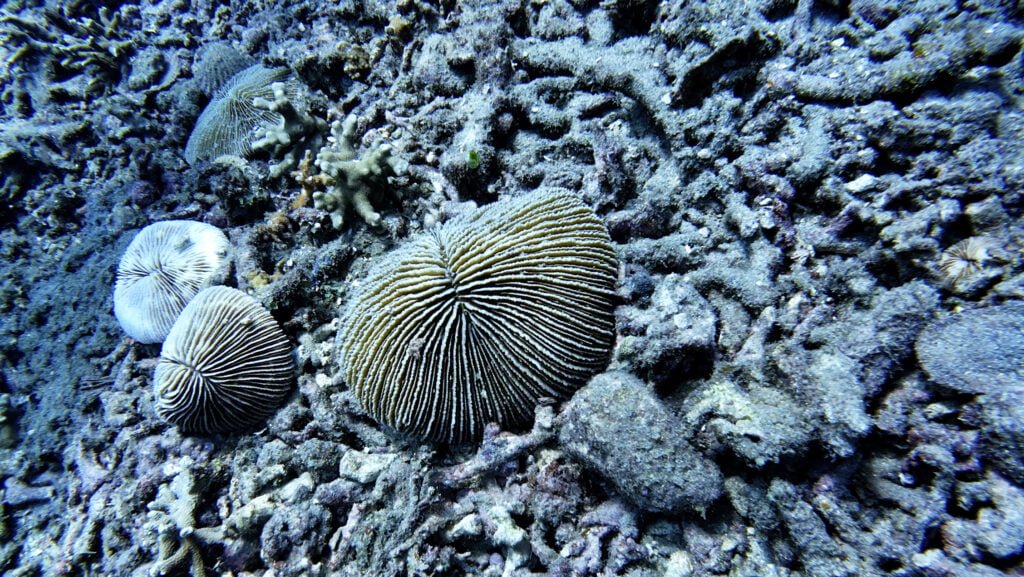
Forms of coral
1. Branched:
- These corals look like miniature trees, with branches that extend into the water.
- They are often solitary, but can also form colonies.
- Example: the acropora coral.
2. Encrusting:
- These corals form flat layers and adhere to rocky or coral surfaces.
- They are generally solitary.
- Example: the Montipora coral.
3. Sub-massive :
- These corals are thicker and more massive than encrusting corals.
- They can be solitary or colonial.
- Example: Porites coral.
4. Table:
- These corals build structures in the shape of flat shelves.
- They are often colonial.
- Example: the Favia coral.
5. Mushroom:
- These corals have a rounded shape and look like mushrooms.
- They are generally solitary.
- Example: the Fungia coral.
6. Massive :
- These corals form large, dense masses.
- They are often colonial.
- Example: the Diploria coral.
7. Leafy:
- These corals have laminated structures and resemble fans.
- They are generally solitary.
- Example: the Goniopora coral.

Feeding
Corals have a symbiotic relationship with single-celled algae called zooxanthellae. Like the leaves of a tree, these algae provide corals with energy through photosynthesis. Corals also eat plankton, which they capture with their tiny tentacles.

Reproduction
Corals reproduce in 2 ways, sexually or asexually.
Sexual reproduction in corals involves fertilization and genetic mixing. There are four modes of sexual reproduction in corals, but we won’t go into them in detail in this article. We will come back to this when we write articles on specific corals.
Sexual reproduction in corals has the following advantages:
- Genetic diversity
- Adaptation to environmental change
- Colonisation of new habitats
But, as with any system, there are also drawbacks:
- Dependence on physical and biological conditions
- Low frequency of reproduction events
- Vulnerability to predators and disturbance
Asexual reproduction in corals is a method of reproduction that does not require fertilisation or genetic mixing. It allows corals to multiply from a single individual, forming identical clones.
There are two main types of asexual reproduction in corals: fragmentation and budding.
Fragmentation occurs when the coral breaks into pieces, either as a result of natural disturbance (storm, cyclone, predator) or human disturbance (fishing, tourism, pollution). Each coral fragment can then attach itself to a new substrate and form a new colony. Fragmentation allows corals to colonise new areas and increase reef density.
Budding is a growth process in the polyp, the basic unit of the coral. The polyp produces an outgrowth, called a propagule, which detaches and becomes a new polyp. Budding can be lateral, when the polyp splits in two, or axial, when the polyp splits from the mouth downwards. Budding allows corals to increase the number of polyps in a colony and form complex structures.
Asexual reproduction of corals offers the following advantages:
- Speed
- Simplicity
- Adaptation to the environment
However, this form of reproduction also has the following disadvantages:
- Vulnerability to disease
- Loss of genetic diversity
- Interspecific competition

Surface area
- Corals cover between 0.08% and 0.16% of the ocean’s surface.
- The largest reef is the Great Barrier Reef, which stretches 2,300 km along the north-east coast of Australia. It is visible from space.
- The second largest reef is the New Caledonian Barrier Reef, measuring 1,600 km in length.

Conservation
The conservation of coral reefs is essential. Climate change, pollution and overfishing threaten their survival. Fortunately, more and more organisations are coming together to protect them. More and more marine protected areas are being created, and numerous scientific studies are looking for solutions to help this ecosystem survive.

Glossary
• Atoll: a ring of coral reef surrounding a lagoon, formed by the sinking of an underwater volcano.
• Barrier reef: a coral reef parallel to the coast and separated from it by a deep channel.
• Bleaching: a phenomenon of coral discolouration caused by environmental stress, leading to the loss of zooxanthellae and the risk of coral mortality.
• Mouth: the polyp’s mouth is located in the centre of the tentacles. This is where the polyp ingests its food.
• Limestone: a mineral substance composed of calcium carbonate, secreted by corals to form their skeleton.
• Cnidaria: a phylum of marine animals including corals, anemones, jellyfish and hydra, characterised by the presence of stinging cells called cnidocytes.
• Coral: a marine animal of the Cnidaria phylum, living in colonies of polyps in warm seas and secreting a differently coloured calcareous substance. By metonymy, this calcareous secretion itself, used as an ornament or jewel.
• Corallite: the cavity in which the polyp lives. It is formed by the calcareous skeleton of the polyp and may contain several polyps.
• Costae: the vertical plates on the outside of the corallite wall, which are a continuation of the septa on the inside of the wall.
• Hard corals (Scleractinians): they build calcareous skeletons and are responsible for the formation of coral reefs.
• Soft corals: these do not have a hard skeleton and are more flexible. They belong to the Alcyonaria class.
• Polyp: the fixed, branched form of Cnidaria, consisting of a hollow tube ending in a mouth surrounded by tentacles. Coral polyps are linked together by a common tissue and form colonies.
• Propagule: a part of a living organism capable of detaching itself and giving rise to a new individual. Corals can reproduce by propagules, such as branch fragments or planktonic larvae.
• Reef: an underwater formation made up of limestone skeletons belonging to the organisms that build them, mainly corals. There are three types of reef: fringing reefs, barrier reefs and atolls.
• Septa: the radiating vertical plates inside the corallite. They can be thick, thin or of varying sizes. They can have teeth ranging from pointed to blade-shaped and are often characteristic of different coral genera.
• Symbiosis: a lasting and mutually beneficial biological association between two organisms of different species. Corals are in symbiosis with photosynthetic unicellular algae called zooxanthellae, which provide them with oxygen and nutrients.
• Tentacle: an elongated, flexible organ, equipped with stinging cells, which Cnidaria use to capture their prey and defend themselves. Coral tentacles are arranged around the mouth and retract when threatened.
• Zooxanthellae: unicellular photosynthetic algae belonging to the Dinoflagellate group, which live in symbiosis in the tissues of certain marine animals, such as corals, anemones and molluscs. Zooxanthellae are responsible for the colouring of corals and provide them with part of their energy.

